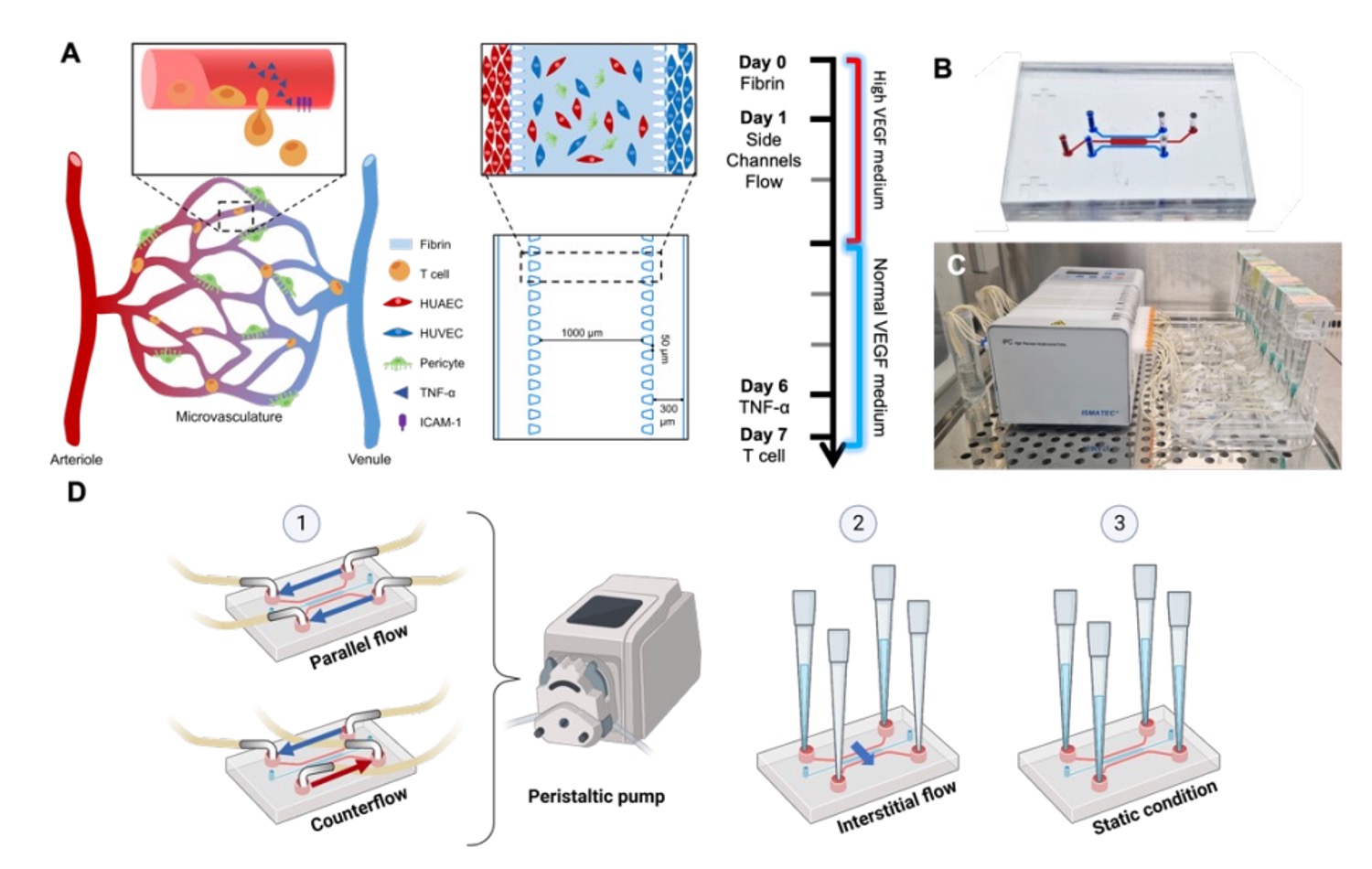New paper from Hirth et al "Self-Assembled and Perfusable Microvasculature-on-chip for Modeling Leukocyte Trafficking"
Read the full paper in Lab on chip here

Abstract
Leukocyte recruitment from blood to tissue is a process that occurs at the level of capillary vessels during both physiological and pathological conditions. This process is also relevant for evaluating novel adoptive cell therapies, in which the trafficking of therapeutic cells such as chimeric antigen receptor (CAR)-T cells throughout the capillaries of solid tumors is important. Local variations in blood flow, mural cell concentration, and tissue stiffness contribute to the regulation of capillary vascular permeability and leukocyte trafficking throughout the capillary microvasculature. We developed a platform to mimic a biologically functional human arteriole-venule microcirculation system consisting of pericytes (PCs) and arterial and venous primary endothelial cells (ECs) embedded within a hydrogel, which self-assembles into a perfusable, heterogeneous microvasculature. Our device shows a preferential association of PCs with arterial ECs that drives the flow-dependent formation of microvasculature networks. We show that PCs stimulate basement membrane matrix synthesis, which affects both vessel diameter and permeability in a manner correlating with the ratio of ECs to PCs. Moreover, we demonstrate that hydrogel concentration can affect capillary morphology but has no observed effect on vascular permeability. The biological function of our capillary network was demonstrated using an inflammation model, where significantly higher expression of cytokines, chemokines, and adhesion molecules was observed after tumor necrosis factor-alpha (TNF-α) treatment. Accordingly, T cell adherence and transendothelial migration were significantly increased in the immune-activated state. Taken together, our platform allows the generation of a perfusable microvasculature that recapitulates the structure and function of an in vivo capillary bed that can be used as a model for developing potential immunotherapies.
Read the full paper external pagehere!
